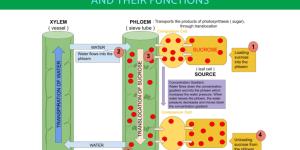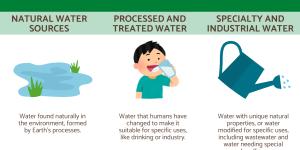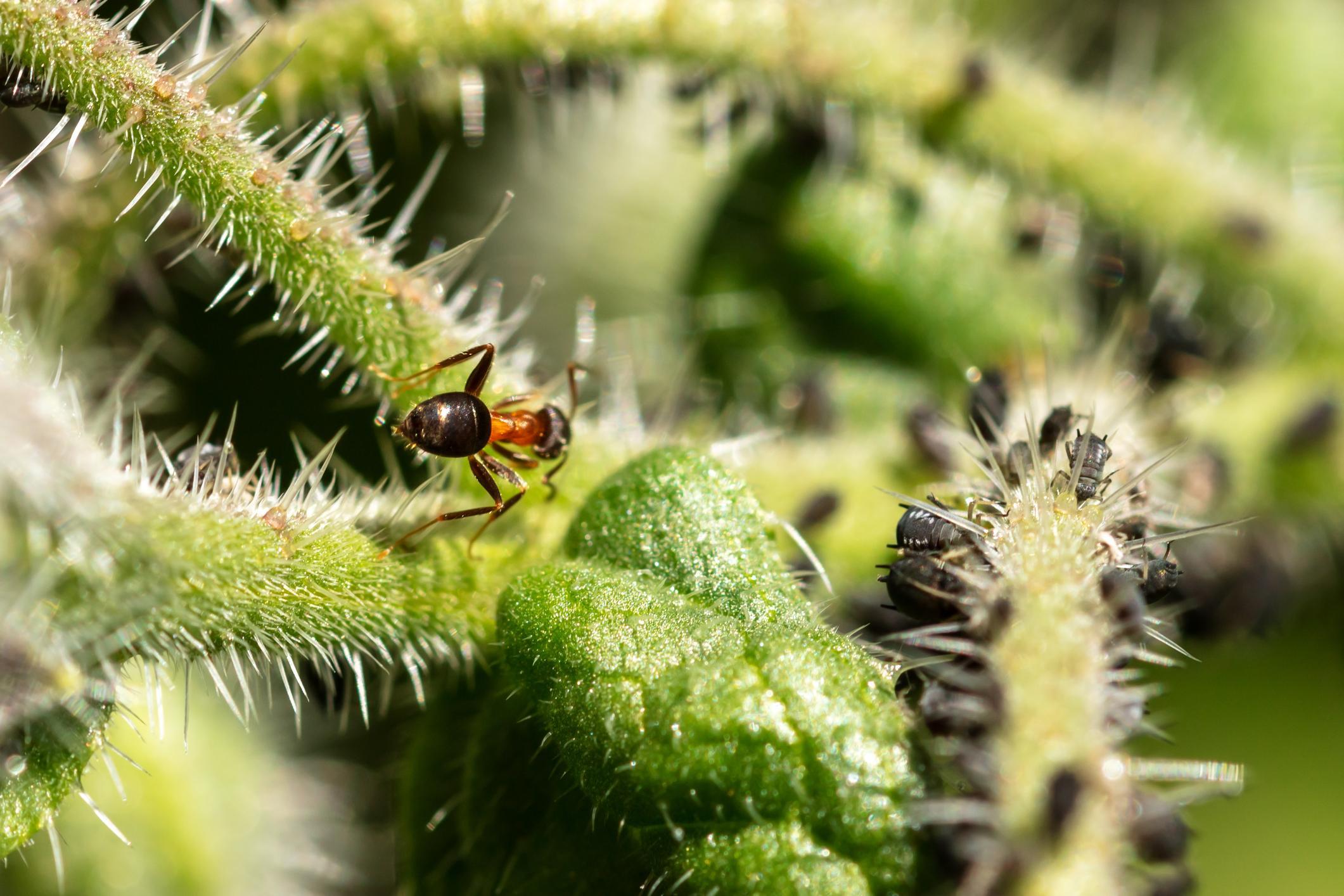Different Types of Nutrition


Have you ever wondered how a giant oak tree gets its energy, or how a tiny bacteria living in the deep sea thrives? The answer lies in a fascinating concept called nutrition, the process by which living things obtain the essential building blocks and fuel to carry out their vital functions. While all organisms need nourishment, the strategies they use to acquire it can be surprisingly diverse.
This article by thedailyECO delves into the three main types of nutrition and explores the fascinating variations within them.
Autotrophic nutrition
Autotrophic organisms are self-sustaining in terms of nutrition. Unlike heterotrophs, which depend on organic compounds produced by other organisms, autotrophs can synthesize their own food from inorganic substances. They achieve this through two primary methods:
Photosynthesis
Photosynthetic autotrophs, or photoautotrophs, utilize sunlight as their primary energy source. They possess specialized structures called chloroplasts that contain chlorophyll, a pigment essential for capturing light energy. Through photosynthesis, photoautotrophs convert sunlight, water, and carbon dioxide into organic molecules like carbohydrates. These carbohydrates serve as the building blocks for growth and fuel essential cellular processes. Plants, algae, and cyanobacteria are all prime examples of photoautotrophs.
Chemosynthesis
Chemoautotrophs, also known as chemotrophs, employ a different strategy for food production. Unlike photoautotrophs, they do not require sunlight. Instead, they extract energy from the oxidation or reduction of inorganic chemical compounds. These chemical reactions provide the necessary energy to synthesize organic molecules.
Chemosynthesis is particularly prevalent in environments where sunlight is limited, such as deep-sea hydrothermal vents. Certain bacteria and archaea are adept at chemosynthesis. For instance, the giant tube worm found near hydrothermal vents houses chemosynthetic bacteria within its tissues. These bacteria utilize the chemical compounds emitted by the vents for energy and, in turn, provide essential nutrients to the tube worm.
For a deeper dive into photosynthesis, including its process, check out this other article.

Heterotrophic nutrition
Heterotrophs are organisms that cannot produce their own food and must obtain organic matter from other living beings for energy and growth. This organic matter, primarily composed of carbon, hydrogen, oxygen, and nitrogen, is synthesized by autotrophs (organisms that produce their own food). Heterotrophs employ various strategies to acquire these essential nutrients:
Holozoans
Holozoan heterotrophs, including humans, ingest solid food particles. They possess specialized digestive systems that break down these complex molecules into simpler forms that can be absorbed and used for cellular processes. Animals are prime examples of holozoans.
Parasites
Parasitic heterotrophs live on or within another organism (the host) and directly absorb nutrients the host has already digested. This often comes at a cost to the host's health. Tapeworms and lice are well-known parasitic organisms.
Saprophytes
Saprophytic heterotrophs obtain nutrients from dead and decaying organic matter. They secrete digestive enzymes externally, breaking down the organic material into simpler molecules for absorption. Fungi and many bacteria are important decomposers in ecosystems.
Symbiotes
Symbiotic heterotrophs engage in mutually beneficial relationships with other species. For example, some protozoa living within a termite's gut aid in digesting cellulose, a complex carbohydrate that the termite cannot break down on its own. Both organisms benefit from this partnership.
Photoheterotrophs
Photoheterotrophs are a unique group of bacteria that utilize sunlight as an energy source but still require organic compounds, such as carbohydrates, from their environment. These organisms represent a blend of autotrophic and heterotrophic characteristics.

Mixotrophic nutrition
Some organisms, known as mixotrophs, possess a unique nutritional strategy. They can combine both autotrophic and heterotrophic modes of nutrition.
Mixotrophs have the ability to alternate between photosynthesis, using sunlight to synthesize food, and consuming organic food sources when available. This versatility allows them to adapt to fluctuating environmental conditions.
When organic matter is abundant, they can take advantage of it, while they can utilize their chloroplasts for photosynthesis when such resources are scarce. Carnivorous plants, corals with symbiotic relationships with zooxanthellae, certain bacteria, algae, archaea, and some protozoa are all examples of mixotrophs.
The emergence of mixotrophy demonstrates the ability of some organisms to evolve flexible nutritional strategies, potentially adapting to changing environments or resource availability.
Curious about how cells create and use energy? This article explores the fascinating world of anabolism and catabolism.

Types of nutrients
As we have seen, living organisms require a variety of nutrients to function, grow, and reproduce. However, the specific nutrients they need differ depending on their nutritional strategy: autotrophic or heterotrophic.
Heterotrophs
Heterotrophs, organisms that cannot produce their own food, require organic molecules (already built-up carbon-based compounds) as their primary source of nutrients. These can be broadly categorized into:
Macronutrients: consumed in large quantities to generate energy and support vital processes like tissue repair and growth. These include:
- Fats
- Carbohydrates
- Proteins
Micronutrients: needed in smaller amounts but essential for various cellular functions. These include:
- Vitamins: act as coenzymes, aiding protein function in metabolic processes.
- Minerals: essential for cellular activities, such as calcium for bone development and iron for oxygen transport.
- Trace elements: required in minute amounts but crucial for specific functions, like iodine for thyroid hormone production.
Heterotrophs obtain these nutrients by consuming other organisms (herbivores, carnivores) or by breaking down dead organic matter (decomposers).
Autotrophs
Autotrophs, organisms that can synthesize their own food from inorganic materials, have different nutritional requirements. They primarily need:
Macronutrients:
- Water (H2O)
- Minerals: Absorbed from the environment (e.g., phosphorus, nitrogen, potassium)
- Carbon dioxide (CO2) from the atmosphere
Micronutrients:
- Required in trace amounts for various functions (e.g., boron, manganese, iron).
Autotrophs use these nutrients, along with sunlight (photoautotrophs) or chemical energy (chemoautotrophs), to manufacture organic molecules (carbohydrates) that fuel their growth and development.
The main difference between autotrophic and heterotrophic nutrition lies in the source of their organic carbon. Heterotrophs rely on pre-built organic molecules, while autotrophs can create them from inorganic sources. Additionally, autotrophs require water as a macronutrient, whereas it's not explicitly listed for heterotrophs (although they do need water for survival).
Want to dive deeper into the fascinating world of how organisms get their food? Check out the video below where we break down the difference between heterotrophs and autotrophs!

If you want to read similar articles to Different Types of Nutrition, we recommend you visit our Facts about nature category.








